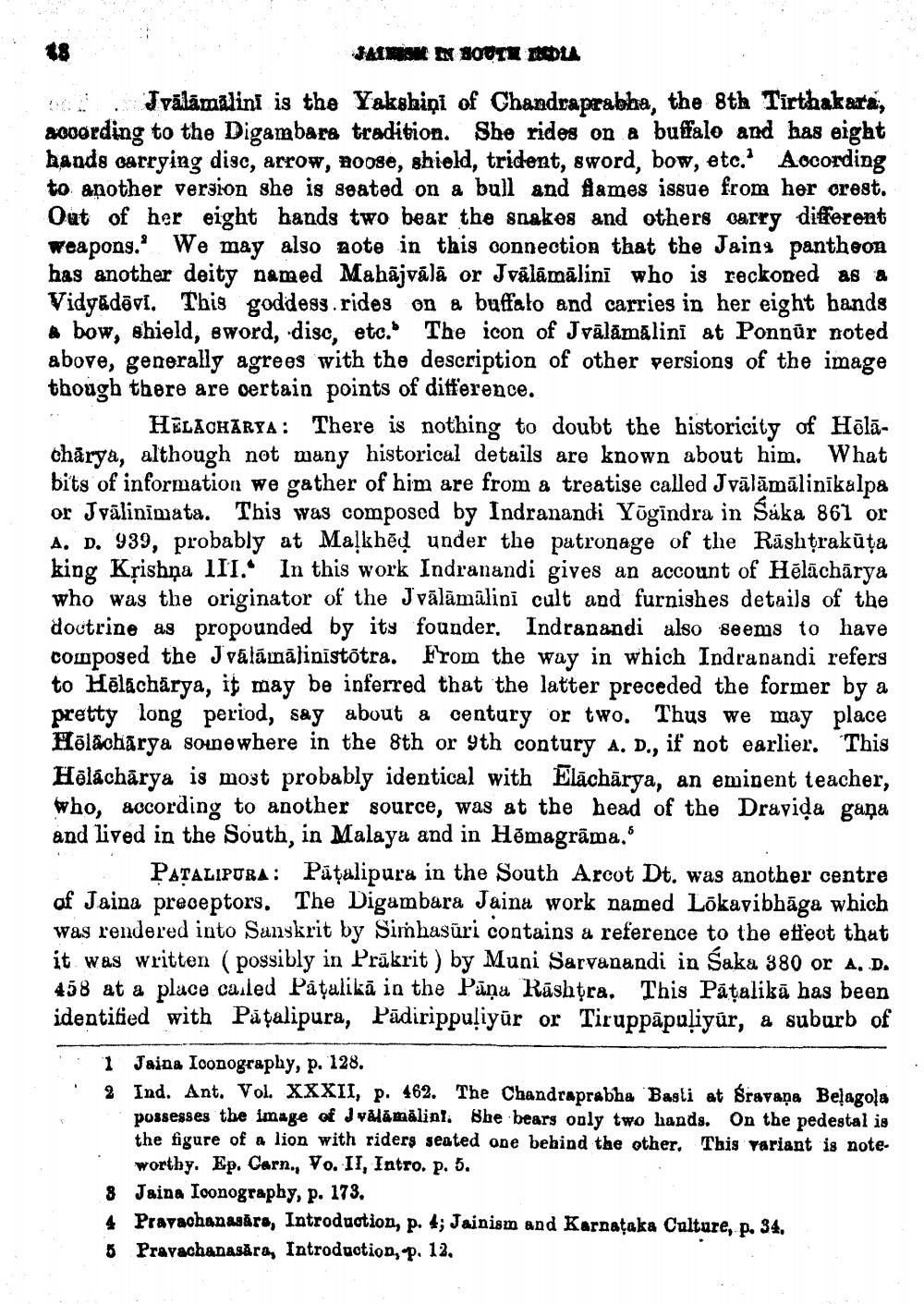________________
JAMAN IN BOUTI DA Ivālāmalini is the Yakshiņi of Chandraprabba, the 8th Tirthakara, socording to the Digambara tradition. She rides on a buffalo and has eight hands carrying disc, arrow, noose, shield, trident, sword, bow, etc. According to another version she is seated on a bull and fames issue from her crest. Out of her eight hands two bear the snakes and others carry different weapons. We may also note in this connection that the Jain, pantheon has another deity named Mabājvālā or Jvālāmālini who is reckoned as a Vidyādēvi. This goddess.rides on a buffalo and carries in her eight hands a bow, shield, sword, disc. etc.. The icon of Jvālāmalini at Ponnür noted above, generally agrees with the description of other versions of the image though there are oertain points of difference.
HELĀCHÁRYA: There is nothing to doubt the historicity of Hõlachārya, although not many historical details are known about him. What bits of information we gather of him are from a treatise called Jvālāmālinikalpa or Jvālinimata. This was composed by Indranandi Yögindra in Sáka 861 or A. D. 939, probably at Malkhēd under the patronage of the Răshtrakūța king Krishna 111. In this work Indranandi gives an account of Hēlāchārya who was the originator of the Jvālāmālini cult and furnishes details of the doctrine as propounded by its founder. Indranandi also seems to have composed the Jvālārnālinīstotra. From the way in which Indranandi refers to Hēlacharya, it may be inferred that the latter preceded the former by a pretty long period, say about a century or two. Thus we may place Hēlachārya soune where in the 8th or 9th contury A. D., if not earlier. This Holáchārya is most probably identical with Elachārya, an eminent teacher, who, according to another source, was at the head of the Dravida gaña and lived in the South, in Malaya and in Hômagrāma.
PATALIPURA: Påtalipura in the South Arcot Dt. was another centre of Jaina preceptors. The Digambara Jaina work named Lokavibhāga which was rendered into Sanskrit by Simhasūri contains a reference to the effeot that it was written ( possibly in Prākrit ) by Muni Sarvanandi in Saka 380 or A..D. 458 at a place called Patalikā in the Pāņa Rāshţra. This Pāțalikā has been identified with Pätalipura, Pādirippuliyūr or Tiruppāpuliyúr, a suburb of
1 Jaina Ioonography, p. 128. 2 Ind. Ant. Vol. XXXII, p. 462. The Chandraprabha Basli at Sravana Belagola
possesses the image of Jvdlämäliny. She bears only two hands. On the pedestal is the figure of a lion with riders seated one behind the other. This variant is note
worthy. Ep. Carn., Vo. II, Intro. p. 5. 8 Jaina Ioonography, p. 173. 4 Pravachanasärs, Introduction, p. 4; Jainism and Karnataka Culture, p. 34, 8 Pravachanasāra, Introduction, op. 12.




